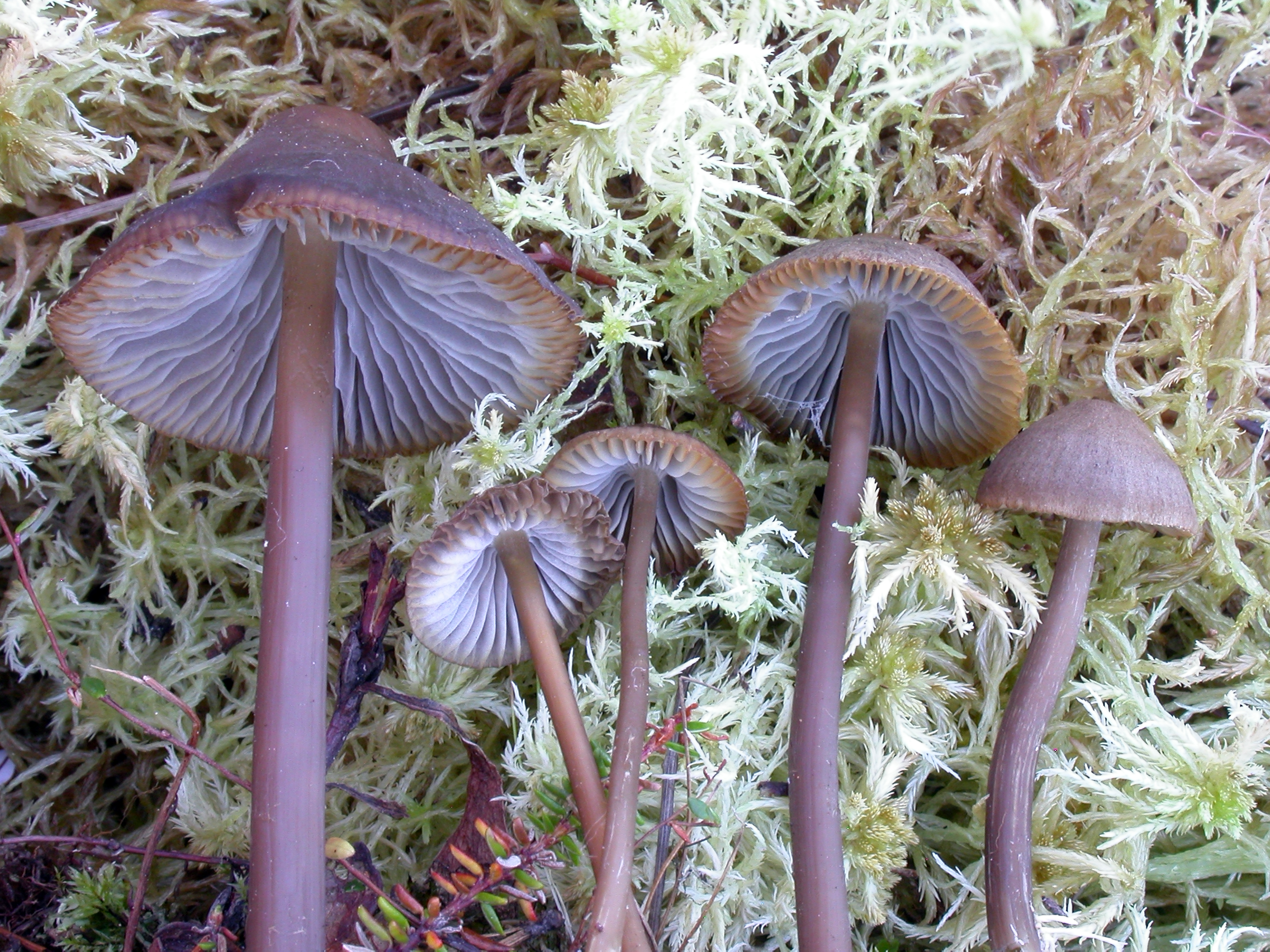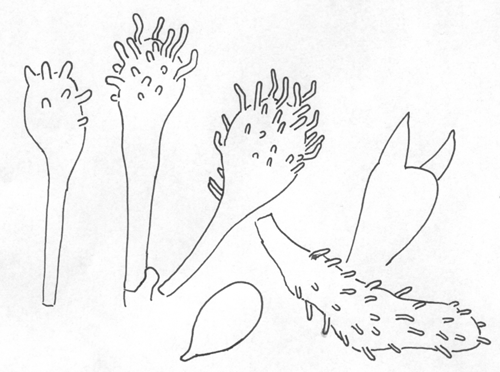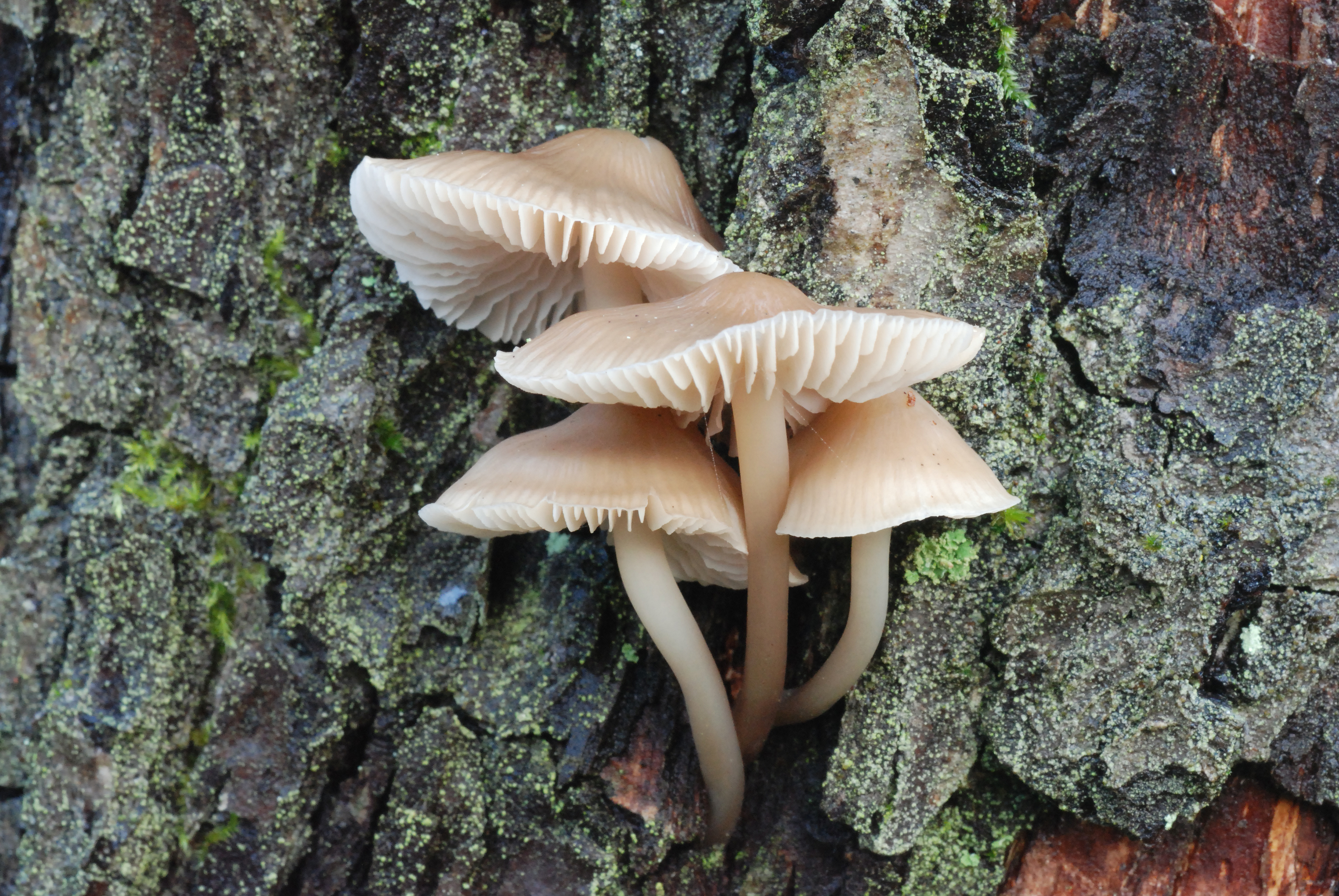Mycena megaspora
Mycena megaspora
Description
Cheilocystidia, basidium and spore.
Cap 10-40 mm across, conical or campanulate, flattening with age, with a more or less prominent umbo, sulcate, ±translucent-striate, pruinose, glabrescent, dark sepia brown to almost black when young, pallescent with age, becoming dark grey-brown to dingy brownish, margin often paler. Flesh cartilaginous-tough. Gills 18-34 reaching the stem, elastic-tough, adnate to almost emarginate, decurrent with a tooth, smooth to strongly veined and anastmosing, fairly dark grey-brown, fading with age to pale greyish or whitish, the edge paler. Stem 30-130 x 2-4 mm, cartilaginous-tough, smooth to longitudinally finely rugulose or becoming fissured, pruinose, glabrescent for the greater part, lubricous when wet, pallid to whitish above, pale to dark sepia brown below, the base densely covered with long, coarse, flexuous, whitish fibrils and gradually passing into a shorter or longer root. Odour mostly indistincive, but also experienced as raphanoid or farinaceous. Basidia 30-50 x 10-15 µm, clavate, 2- or 4-spored, with sterigmata up to 10 µm long. Spores 11.6-17.5 x 7.6-8.4 µm (2-spored) or 9-12.5 x 6-8.1 µm (4-spored), Qav ˜ 1.3-2.0, pip-shaped, amyloid. Cheilocystidia 24-65 x 5.5-17 µm, forming a sterile band, clavate, subcylindrical or irregularly shaped, covered with few to numerous, fairly coarse excrescences. Pleurocystidia absent. Lamellar trama dextrinoid. Hyphae of the pileipellis 2-3.5 µm wide, covered with warts or short excrescences. Hyphae of the cortical layer of the stem 3-4.5 µm wide, diverticulate, excrescences 2-5.5 x 1-2 µm. Clamps present in all tissues in 4-spored form, absent in 2-spored form.
Ecology and distribution
Scattered to gregarious or subfasiculate. Growing in a wide variety of habitats, e.g. burnt heaths, naked peat, Sphagnum bogs, boggy ground under conifers. Summer to autumn. Widespread in Norway, also in alpine regions.


